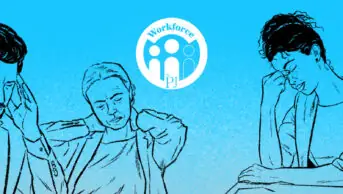
David Willis / Alamy Stock Photo
The vacancy rate for community pharmacists has doubled in a year to 16%, NHS England’s community pharmacy workforce survey has revealed.
The survey, which ran from 6 October to 30 November 2022, also showed that, on average, across 42 integrated care systems, 44% of pharmacy owners said that filling vacancies in their pharmacy was ‘very difficult’.
The 2022 ‘Community Pharmacy Workforce Survey’, published on 3 August 2023, also showed that the number of pharmacists working in community pharmacies remained almost the same as the previous year, 2021. In headcount terms, there were 27,711 pharmacists working in 2022, a 1% increase on the 27,406 working in 2021.
However, there was a 13% decrease in the number of full-time equivalent (FTE) pharmacists in community pharmacy between 2021 and 2022.
The data also show a 15% decline in the number of FTE employed pharmacists, from 12,892 in 2021 to 10,943 in 2022, and a rise of 26% in the number of locum pharmacists working in community pharmacy, from 4,363 in 2021 to 5,477 in 2022.
The vacancy rate for pharmacists was 16% in 2022, compared with 8% in 2021.
For the first time, the 2022 survey was a terms of service requirement for all pharmacy owners in England, which lead to an 87% response rate of useable data, compared with 47% the previous year, when the survey was voluntary.
NHS England warned that the difference in response levels “may have some effect on the trend information produced”.
In a statement published alongside the data, it said: “The factors influencing workforce trends are complex and beyond the scope of this survey. However, the insight provided by the 2022 survey is helping NHS England, employers and stakeholders to inform future investment in education and training, and effective workforce planning, across all sectors of pharmacy.”
The survey’s findings come after NHS England published its ‘Long Term Workforce Plan’ in June 2023, which promised to increase pharmacy training places by nearly 50% over the next eight years to 2031/2032 “to meet the demand for pharmacy services”.
Commenting on the survey, Malcolm Harrison, chief executive of the Company Chemists’ Association, said: “The survey findings confirm what we have been saying for over a year, that pharmacist vacancy rates in community pharmacy have increased significantly since 2021.
“Following the recent release of the NHS workforce plan, we need to now see immediate action taken to address this growing problem.
“We also note a 37% increase in the number of independent prescribers,” he added.
“We are concerned, however, that this does not reflect the whole picture. The 37% increase only represents an increase in 1.6% of the total community pharmacist workforce, growing from 4.2% to 5.8%. We want 95% of community pharmacists to be prescribers by 2030. There is still a long way to go before the public can expect to find a prescriber in every pharmacy.”
Alastair Buxton, director of NHS Services at Community Pharmacy England, commented: “The new data confirm the worrying reduction in the overall workforce and increase in vacancy rates that our Pharmacy Pressures Survey indicated earlier this year.
“[The results] demonstrate just how hard the workforce and funding crisis has been hitting pharmacy owners. Similarly, the impact on pharmacy teams continues to be very significant, adding to their already pressured workload.”
Graham Stretch, president of the Primary Care Pharmacy Association and chief pharmacist and partner at the Argyle Health Group, said that the fall in the number of FTE employed pharmacists, alongside the almost static headcount figure, points to pharmacists opting for different working patterns.
“This suggests that pharmacists are choosing to work in a portfolio manner, or just reducing their hours,” he said.
“We are seeing the same in primary care networks and general practice, and I think it is probably a healthy thing.”


